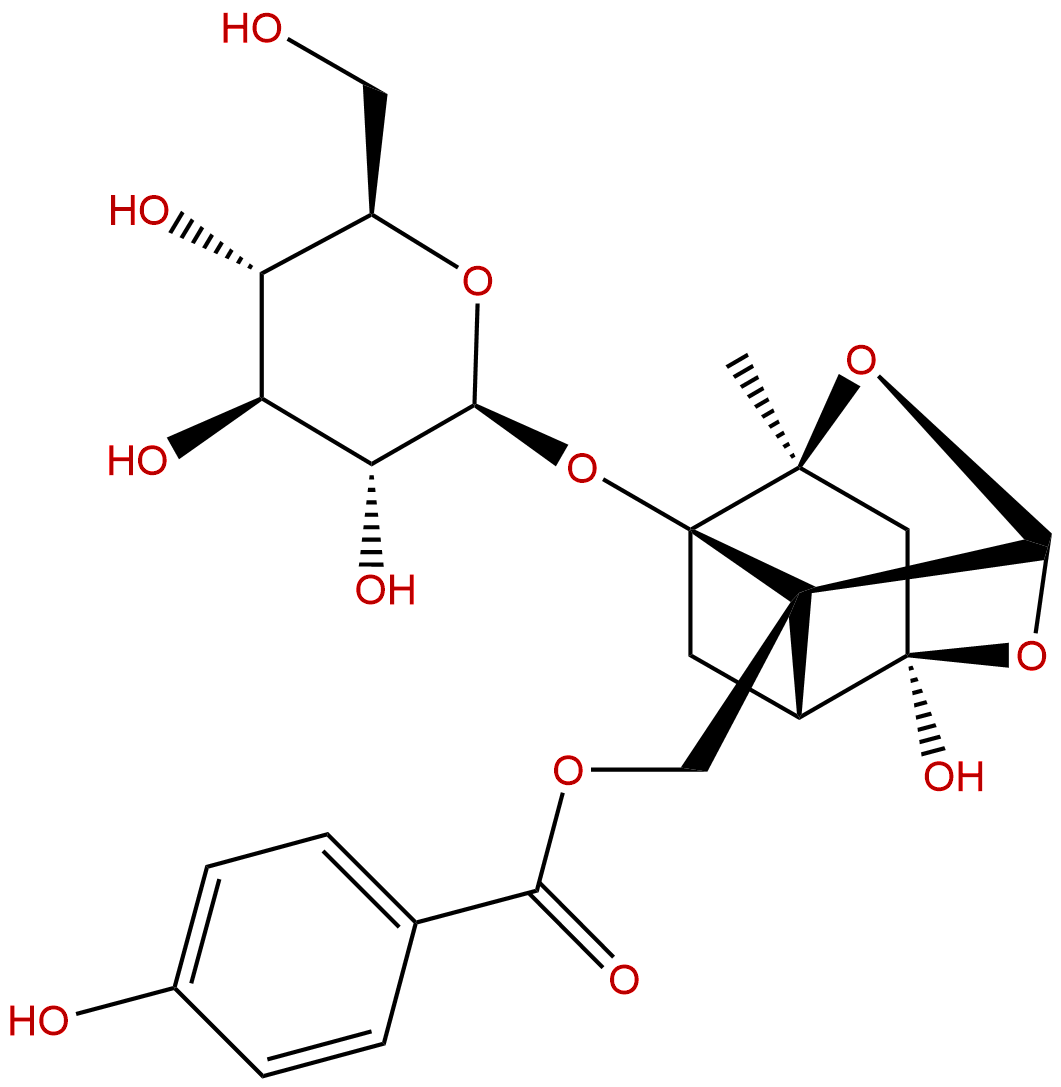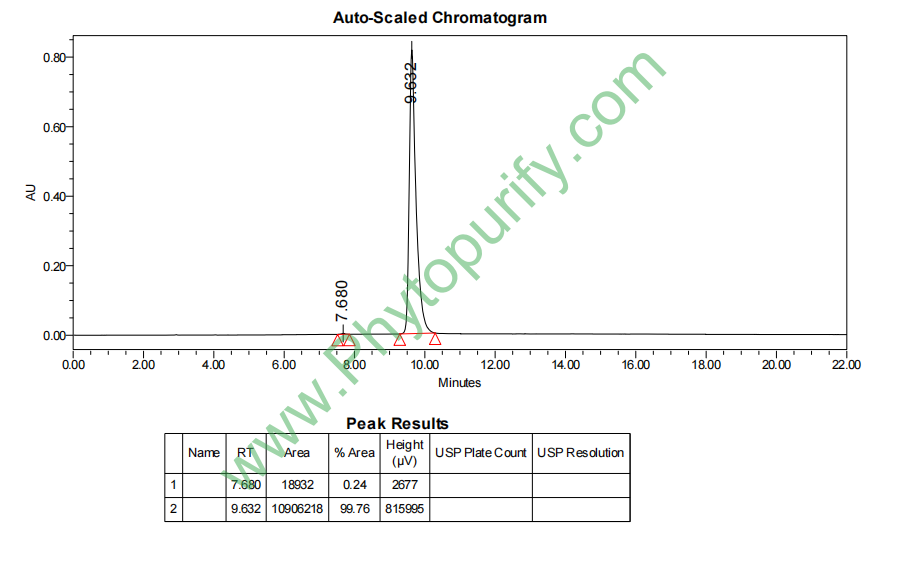
OxypaeoniflorinCAS No.:39011-91-1
|
||||||||||
 |
|
|
||||||||

| Catalogue No.: | BP1050 |
| Formula: | C23H28O12 |
| Mol Weight: | 496.465 |
Product name: Oxypaeoniflorin
Synonym name:
Catalogue No.: BP1050
Cas No.: 39011-91-1
Formula: C23H28O12
Mol Weight: 496.465
Botanical Source: Paeonia lactiflora Pall.
Physical Description:
Type of Compound: Monoterpenoids
Purity: 95%~99%
Analysis Method: HPLC-DAD or/and HPLC-ELSD
Identification Method: Mass, NMR
Packing: Brown vial or HDPE plastic bottle
Storage: Store in a well closed container, protected from air and light. Put into refrigerate or freeze for long term storage.
The product could be supplied from milligrams to grams
Inquire for bulk scale.
Description:
Oxypaeoniflorin in rat plasma and was successfully applied to pharmacokinetic study.
References:
J Ethnopharmacol. 2010 Jul 20;130(2):407-13.
Pharmacokinetic properties of paeoniflorin, albiflorin and oxypaeoniflorin after oral gavage of extracts of Radix Paeoniae Rubra and Radix Paeoniae Alba in rats.
To establish a HPLC-MS method and investigate the pharmacokinetic properties of paeoniflorin, albiflorin and Oxypaeoniflorin and the pharmacokinetics difference of Radix Paeoniae Rubra and Radix Paeoniae Alba.
METHODS AND RESULTS:
The extracts of Radix Paeoniae Rubra and Radix Paeoniae Alba were separately administrated to rats. The concentrations of paeoniflorin, albiflorin and Oxypaeoniflorin in rat plasma were determined by HPLC-ESI-MS method. The plasma samples were pretreated by protein precipitation with methanol and chromatographic separation was performed on a C(18) column with a mobile phase consisted of 0.1% formic acid and methanol (67:33, v/v). The detection was accomplished by multiple-reaction monitoring (MRM) scanning via electrospray ionization (ESI) source operating in the negative ionization mode. Main pharmacokinetic parameters were estimated and the total AUC of the three components were compared. The pharmacokinetic parameters of paeoniflorin, albiflorin and Oxypaeoniflorin were significantly different. There was significant difference between the pharmacokinetic characteristics of Radix Paeoniae Rubra and Radix Paeoniae Alba.
CONCLUSIONS:
A specific and sensitive HPLC-ESI-MS method was developed for simultaneous determination of paeoniflorin, albiflorin and Oxypaeoniflorin in rat plasma and was successfully applied to pharmacokinetic study. The results might be helpful for the investigation of different effects of Radix Paeoniae Rubra and Radix Paeoniae Alba.or the investigation of different effects of Radix Paeoniae Rubra and Radix Paeoniae Alba.
Chem Pharm Bull (Tokyo). 2001 Jan;49(1):69-72.
Bioactive constituents of chinese natural medicines. VI. Moutan cortex. (2): structures and radical scavenging effects of suffruticosides A, B, C, D, and E and galloyl-oxypaeoniflorin.
METHODS AND RESULTS:
Five paeonol glycosides, suffruticosides A, B, C, D, and E, and a monoterpene glucoside, galloyl-Oxypaeoniflorin, were isolated from the glycosidic fraction of Chinese Moutan Cortex, the root cortex of Paeonia suffruticosa Andrews, together with paeonolide, apiopaeonoside, galloyl-paeoniflorin, Oxypaeoniflorin, and paeoniflorin. The structures of five suffruticosides and galloyl-Oxypaeoniflorin were elucidated on the basis of chemical and physicochemical evidence.
CONCLUSIONS:
Suffruticosides A, B, C, and D, galloyl-Oxypaeoniflorin, and galloyl-paeoniflorin exhibited more potent radical scavenging effects than alpha-tocopherol.
HPLC of Oxypaeoniflorin
